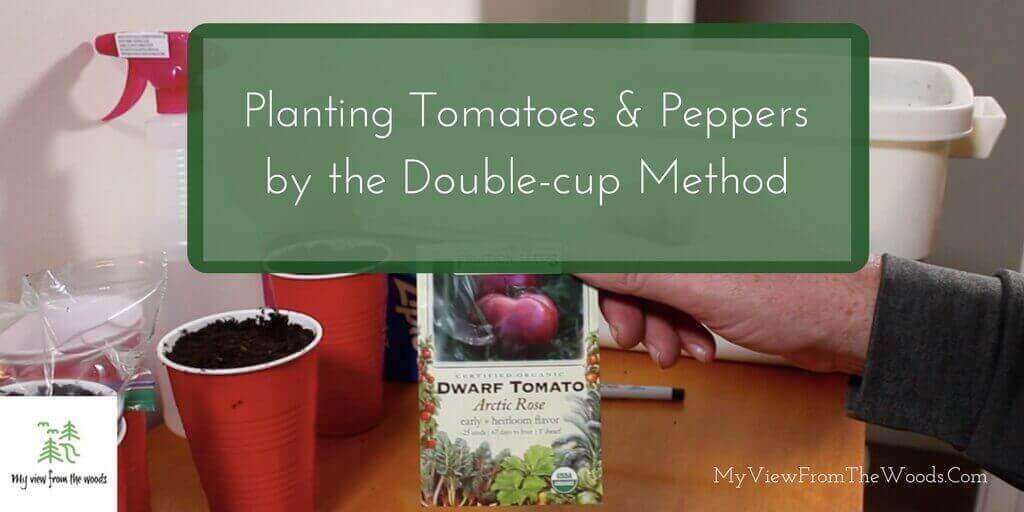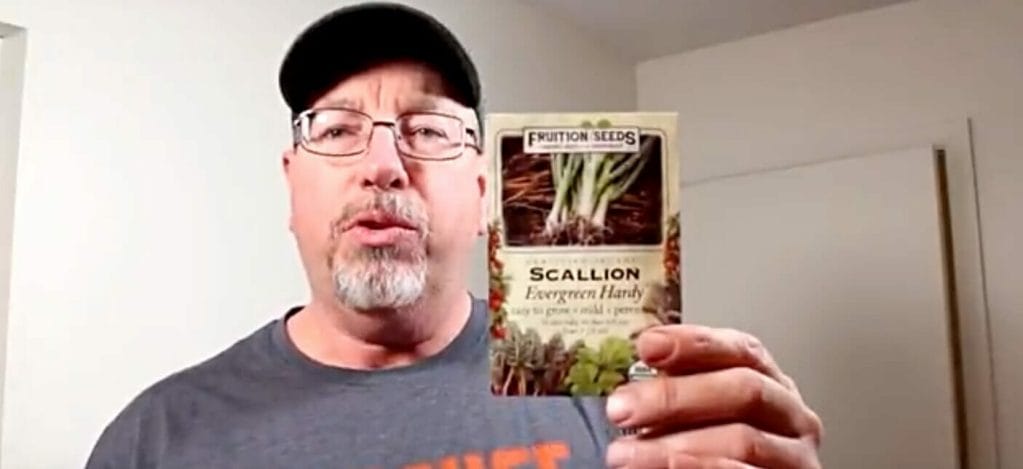Even though I have no data to back this up, I would imagine the most common seeds planted indoors are tomato and pepper seeds.
I started my tomato and pepper seeds using my homemade seed starter mix and the double-cup method of planting I learned from John at Backyard Eden. Eventually, the plants will be transplanted into larger containers for my indoor garden.
Man articles have been published on starting tomato plants, but until recently, I haven’t seen any written about using the double-cup method.
Using inexpensive, easily modified, reusable, durable cups available in many sizes and in every grocery and discount store seems like a great container to start seeds in.
Plus, since those cups are stackable, they can also be used as a water reservoir as the seedlings grow into transplants.
Planting Tomato & Pepper Seeds
Let’s face it planting tomato seeds isn’t that big of a deal or even hard to do.
The hard part is keeping them alive once they’ve germinated.
So, a planting method that gives the seedling a better chance of surviving and growing strong is key for any gardener.
The tomato & pepper seeds are from Fruition Seeds.
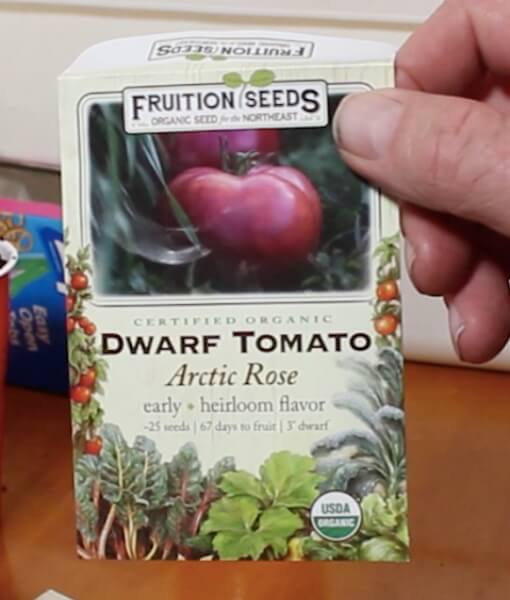

Double-cup Method for Planting Tomato Seeds
The double-cup method is good for tomatoes, peppers, or any other seed start that you’ll transplant into larger containers.
The double-cup method uses two plastic cups stacked inside one another.
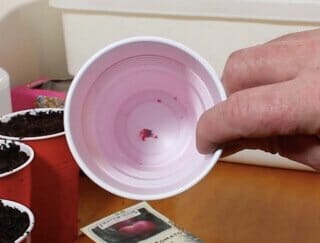
Punch a hole or cut the lower sides of the cup for drainage.
The inside cup has a hole punched in the bottom or clipped off three small slivers of plastic around the base to allow water to contact the seed starting mix you place in the top cup.
Ziplock bags can be used as a cover over the stacked cups to keep the humidity high while the seeds germinate and the young seedlings are tender.
The lower cup reservoir makes keeping the soil evenly moist easier since you can water from the bottom and top. You do have to be careful not to overwater, though.
What Are the Benefits of the Double-Cup Method?
Seeds need the right conditions to germinate and grow into prospering plants.
It is easy to provide those conditions with the double-cup method. Using 16-oz cups, the soil volume is large enough to grow a substantial root mass and retain moisture in the soil to grow in a non-humid area with less frequent waterings.
Ziplock bags can be closed over the top of the cups to hold in moisture while the seeds germinate and protect the young seedlings.
Just like a mini-greenhouse.
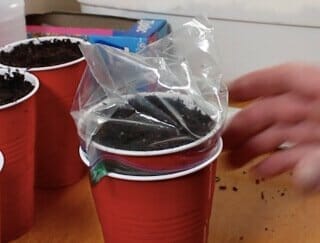
The ziplock doesn’t completely tighten around the side of the cup, allowing fresh air into the mini-greenhouse. The bag is also clear enough to allow light to reach the seedling. The bag tempers the climate around the plant during the evening hours.
The bags can be taken off as the seedlings grow and then put back on during the night, effectively hardening off the seedlings to acclimate to room conditions.
The 16-oz cups hold quite a bit of soil, allowing the young seedlings room to develop a large mass of roots.
The cups are tapered from small at the bottom to larger at the top, so the transplant will easily slide out of the cup when you transplant it.
The large root ball and soil volume will make for an easier transition after being transplanted.
After use, the cups can be washed and sterilized either by hand or on the top rack of a dishwasher. Once dry, they can be stacked and easily stored away for use at a later time.
What Are the Downsides to the Double-Cup Method?
Now, if you want to grow a lot of transplants for the outside garden, the double-cup method probably isn’t work unless you have a lot of grow lights or a greenhouse and you have quite a bit of time to transplant the seed starts.
The traits that benefit the double-cup method become a hindrance when scaling the process to a market gardener.
The cups take up quite a bit of room and the larger root mass that the double-cup method slows down the transplanting because of the larger hole needed when setting out the plants.
Don’t get me wrong; the method will work for larger-scale gardens and farms. However, it will take more resources.
However, for those wanting to start only a few plants, the double-cup method is an excellent way to produce healthy transplants.
Planting seeds in a Double-Cup
Watch the video below to see how I plant tomato and pepper seeds using the double-cup method.
How Well Does the Double-Cup Method Work?
To find that out, stay with this series. You can subscribe to my YouTube channel or this website to get updates.
I’ll keep posting my results, showing you the wins and losses as they come. I’ll post links here once the new posts have been published.
Other people use the double-cup method with success.
Using common sense and trying a few little tweaks, there is no reason you and I can’t make the double-cup method work for us!
Give it a try!
Remember, just plant!
Don’t forget to share this post with your friends! Use the image below on your Pinterest Board.
